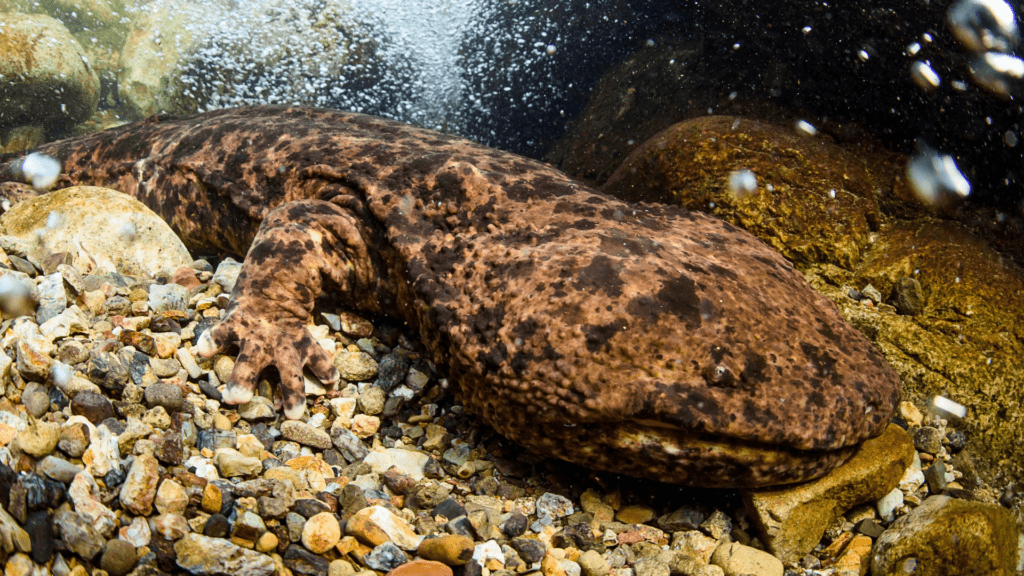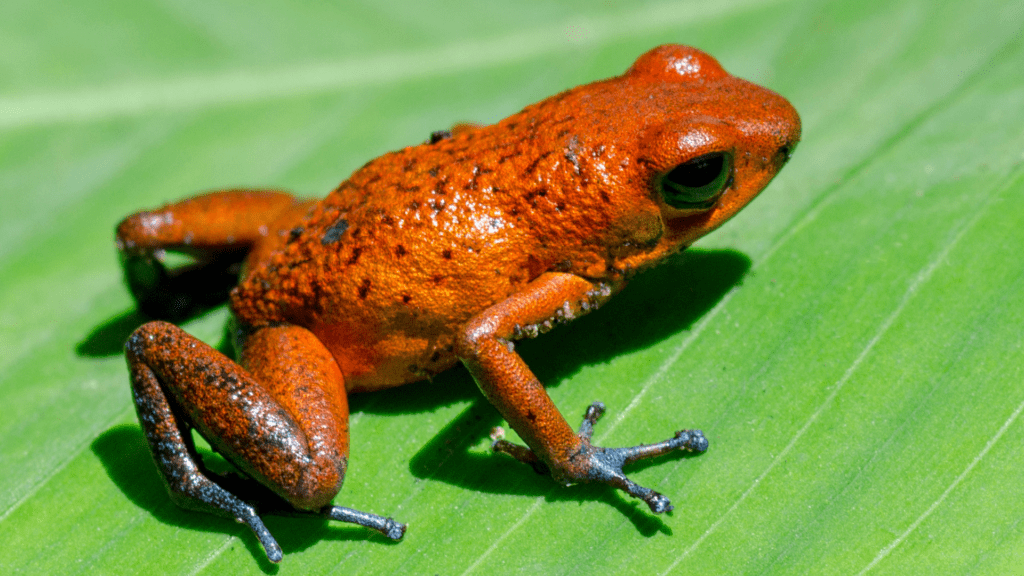The American Green Tree Frog stands out as a captivating member of the New World tree frog family, flourishing across the southern United States. These remarkable amphibians have gained popularity both as household pets and subjects of scientific research.
Scientific Classification
- Kingdom: Animalia
- Phylum: Chordata
- Class: Amphibia
- Order: Anura
- Family: Hylidae
- Genus: Hyla
- Scientific Name: Hyla cinerea
Green Tree Frogs fascinating creatures are classified as monotypic, indicating the absence of any subspecies variations.
Size: These moderately-sized amphibians typically measure approximately 6 centimeters (2.5 inches) from head to toe.
Color: Their body coloration exhibits remarkable variation, ranging from vibrant yellow-olive to brilliant lime green hues. It’s noteworthy that environmental factors such as temperature and lighting conditions significantly influence the intensity and shade of their coloration.
Green Tree Frog’s skin is adorned with delicate gold or white speckles. A distinctive feature is the light-colored stripe, ranging from pale yellow to creamy white, extending from its jawline all the way to its groin area.
The ventral region typically displays a lighter coloration, usually pale yellow or white.
Toe Pads: Like their tree frog relatives, these amphibians possess prominent toe pads, essential for their arboreal lifestyle.
Habitat
Green Tree Frog is a highly adaptable amphibian that thrives in a variety of aquatic and semi-aquatic environments. Here’s an in-depth look at its preferred habitats and the features that make these areas ideal for its survival.
Preferred Habitats
Green Tree Frog is commonly found in environments rich with floating vegetation, organic debris, grasses, and cattails. These elements provide essential resources for shelter, breeding, and feeding. Some of its favorite habitats include expansive lakes, wetland marshes, quiet ponds, and gentle streams. Large bodies of water with abundant vegetation offer ample space and resources, while calm, shallow waters are ideal for laying eggs and raising tadpoles.
Adaptations to Habitat
Green Tree Frog has several adaptations that allow it to thrive in these environments. Its bright green coloration helps it blend seamlessly with vegetation, offering protection from predators. Strong, adhesive toe pads enable it to climb and perch on plants and debris, while its excellent swimming skills allow it to navigate through water with ease.
Role of Vegetation
Floating vegetation and organic debris play a crucial role in the life of this species. These elements provide shelter from predators and harsh weather conditions, safe areas for laying eggs and raising tadpoles, and abundant food sources like insects and other small prey.
Importance of Wetlands
Wetlands are particularly important for the Green Tree Frog, as they offer a combination of water, vegetation, and food sources. Protecting these habitats is essential for the survival of this species and the overall health of the ecosystem.
Green Tree Frog is a remarkable example of how amphibians adapt to their environments. By understanding its habitat needs, we can better protect and preserve this vibrant species for future generations.
Distribution
Green Tree Frog native range encompasses the Southeastern United States, primarily spanning from Eastern Virginia and Southeast Florida eastward to central Texas westward. Notable populations have also been documented in Delaware and Maryland.
Additional populations have established themselves around Vancouver Island and select regions of British Columbia.
Diet
Green tree frogs are insectivorous, maintaining a diverse diet of flying insects. They particularly favor mosquitoes, flies, and various smaller insects. A fascinating behavioral trait is their preference for highly active prey, regardless of the prey’s size.
Green Tree Frog Call
Male Green Tree Frog specimens typically vocalize during humid, overcast evenings, producing distinctive calls characterized by repeated “quonks” or “queenk-queenk-queenks” sounds.
Life Cycle and Reproduction
Green Tree Frogs primary breeding period extends from April through August. Male frogs emit specific advertisement calls to attract potential mates. The mating process involves amplexus, during which the male positions himself on the female’s back; fertilization occurs as the male releases sperm to meet the female’s eggs.
Research has shown that male green tree frogs exhibit polygynous behavior, actively seeking multiple mating partners rather than forming monogamous relationships. This reproductive strategy maximizes their genetic contribution to future generations.
The breeding process is intricately linked to environmental conditions, particularly photoperiod, ambient temperature, and rainfall patterns. Female frogs demonstrate remarkable reproductive capacity, producing clutches containing up to 400 eggs. The development period for green tree frog tadpoles varies between 4 to 14 days before hatching occurs.
Despite having a single annual breeding season, these amphibians frequently produce multiple clutches during this period, showcasing their reproductive efficiency.
Interesting Facts
Let’s explore some fascinating aspects of the green tree frog’s natural history and cultural significance.
- The American Green Tree Frog holds the distinguished position of being the official state amphibian for both Georgia and Louisiana, highlighting its cultural importance in these regions.
- Green Tree Frogs display intriguing hunting preferences, with studies showing that approximately ninety percent of their successful captures involve active prey rather than stationary targets, demonstrating their remarkable predatory instincts.
- Their adaptability to captivity is noteworthy, with documented cases of individuals thriving for more than six years under proper care conditions.
Care
Green tree frogs have earned their reputation as exceptional pets, combining endearing characteristics with manageable care requirements. For prospective owners, the following comprehensive care guidelines ensure optimal health and happiness for these fascinating amphibians.
- Tank: Provide a minimum 10-gallon enclosure, prioritizing vertical space over horizontal dimensions. The tank’s height is crucial for these arboreal species. Essential equipment includes a secure lid to prevent escapes.
- Substrate: Select moisture-retaining materials such as gravel, cypress mulch, or soil enriched with peat/vermiculite mixtures. Enhanced naturalistic appeal can be achieved by incorporating moss and cork bark layers.
- Artificial environment: Create a naturalistic habitat by incorporating pesticide-free branches, foliage, and artificial plants. This setup enables natural climbing behaviors while ensuring the absence of harmful chemicals that could compromise your pet’s health.
- Temperature: Maintain summer temperature gradients between 20-25 degrees Celsius (68-77 degrees Fahrenheit). Winter months require adjusted, cooler temperature ranges to mirror natural seasonal variations.
- Light: Given their nocturnal nature, UVA/UVB lighting isn’t mandatory in their enclosure setup. However, maintaining natural light cycles helps regulate their biological rhythms.
Water: A spacious, shallow dish containing de-chlorinated water is crucial for your green tree frog’s well-being. Daily misting of the enclosure using the same water type is essential to maintain optimal humidity levels within the habitat.
Diet: it thrive on a varied diet consisting primarily of crickets, moths, flies, and various worm species. Regular supplementation with appropriate vitamins ensures balanced nutrition for long-term health.
Lifespan
In proper care conditions, Green Tree Frogs typically live between 2 to 5 years, though some specimens may exceed this range.
Conservation Status
Currently, green tree frogs maintain stable populations worldwide. The International Union for Conservation of Nature (IUCN) classifies them as a species of Least Concern, indicating their robust presence in natural habitats.
faq”s
1. What is a Green Tree Frog?
The Green Tree Frog (Hyla cinerea) is a small, bright green amphibian native to the southeastern United States. It is known for its vibrant color, sticky toe pads, and ability to climb trees and other surfaces.
2. Where do Green Tree Frogs live?
Green Tree Frogs are commonly found in wetlands, swamps, marshes, and near ponds or lakes. They prefer areas with plenty of vegetation and water sources
3. What do Green Tree Frogs eat?
They are insectivores, feeding on a variety of insects such as flies, mosquitoes, crickets, and moths. They use their long, sticky tongues to catch prey.
4. How big do Green Tree Frogs get?
Adult Green Tree Frogs typically grow to about 2 to 2.5 inches (5 to 6.5 cm) in length.
5. Are Green Tree Frogs poisonous?
No, Green Tree Frogs are not poisonous to humans. However, they can secrete a mild mucus that may irritate the skin or eyes.
6. What is the lifespan of a Green Tree Frog?
In the wild, they can live up to 6 years. In captivity, with proper care, they may live longer.
7. How do Green Tree Frogs reproduce?
They breed in water, where females lay eggs that hatch into tadpoles. The tadpoles then undergo metamorphosis to become adult frogs.

